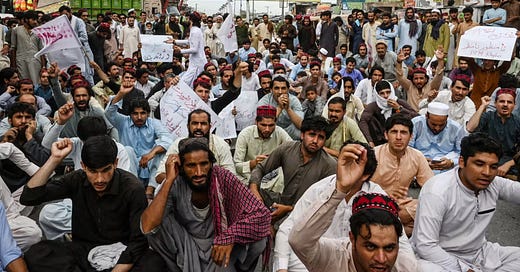Pakistan's Economic Crisis Deepens with New IMF Loan Conditions
Middle and Lower-Income Classes Bear the Brunt of Fiscal Measures Aimed at Debt Relief
Dear Readers,
I hope this message finds you well.
Today, I'm sharing an in-depth feature I wrote, which dives into the heart of Pakistan's current economic crisis and the growing public unrest involving the IMF. The article, recently published as The Big Stoy on Nikkei Asia, captures the critical developments and their implications for Pakistan's economy.
The feature begins by detailing the Pakistani government's recent measures to impose a record $6.1 billion in additional taxes and increase electricity prices by up to 50%. These actions are part of a broader effort to secure a loan deal with the IMF and avoid a debt default, aiming to stabilize an economy under immense pressure.
Read Also: Feature Story: Pakistan's rooftop solar boom
Pakistan's $380 billion economy is grappling with soaring debt, with 53% of the 2024-25 budget allocated for debt servicing. The country's external debt stands at $130 billion, while foreign exchange reserves are just $9.4 billion.
Providing historical context, the article notes that Pakistan has entered into 23 agreements with the IMF since 1950, with mixed results. Experts debate the effectiveness of these programs, highlighting that structural problems remain unresolved despite repeated interventions.
Recent developments include the government's negotiation of a loan program with the IMF, which resulted in entering a staff-level agreement with the IMF of a $7 billion Extended Fund Facility for 3 years.
The socioeconomic impact of these measures is significant. The new budget disproportionately affects middle and lower-income classes, increasing taxes on salaries and raising electricity and fuel prices. In contrast, large industries, retailers, and landowners are largely protected from new taxes, exacerbating economic inequality.
The article features insights from economists and analysts who provide a nuanced view of the broader implications of the IMF programs and suggest potential alternatives and reforms. There are differing opinions on whether IMF programs genuinely benefit Pakistan or merely serve as temporary fixes.
This feature provides a comprehensive analysis of the current economic situation in Pakistan, highlighting the challenges and potential pathways forward. I invite you to read the full article to gain a deeper understanding of these critical issues.
Click here to read the full story
Thank you for being a valued reader. Your engagement and feedback are always appreciated.
Best regards,
Adnan Aamir
This post is public so feel free to share it.





